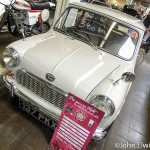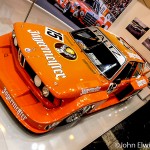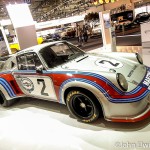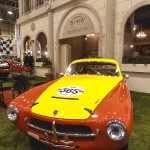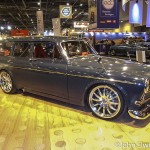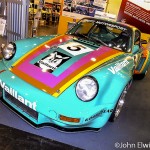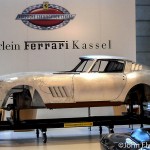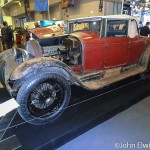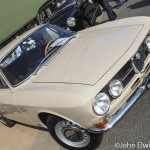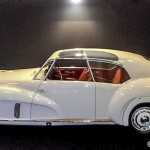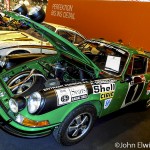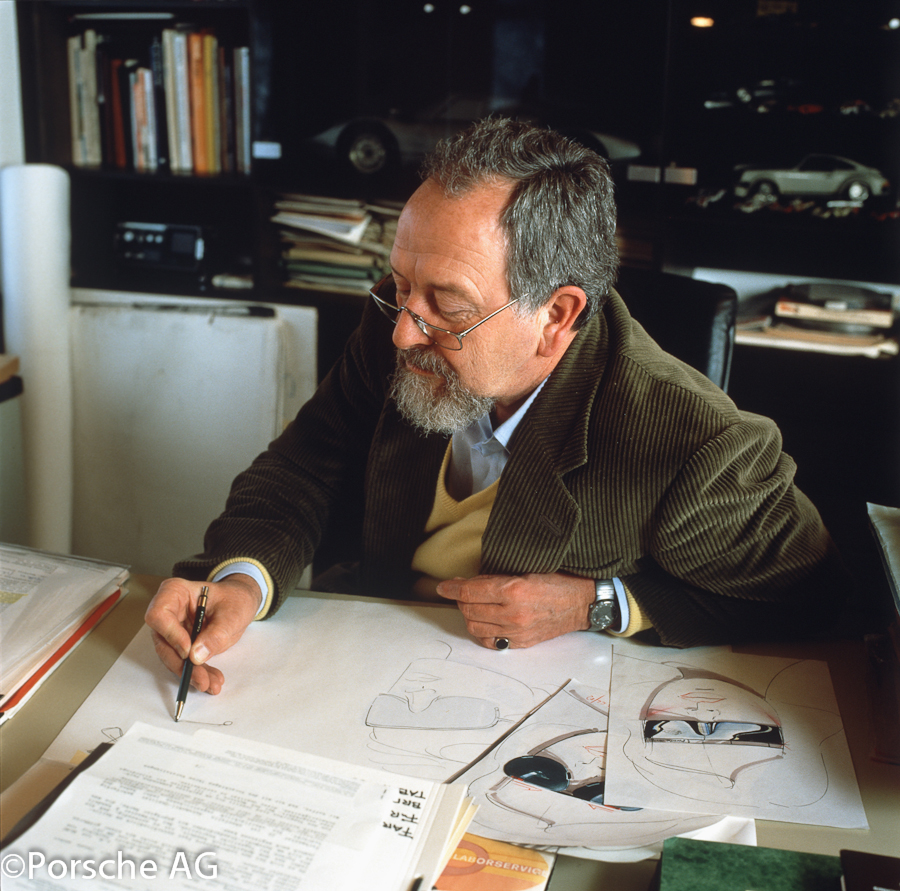24th TECHNO CLASSICA ESSEN
Others may try to emulate or even usurp Techno Classica’s position as the biggest and best classic car show in Europe but they’ve got a long way to go to match the sheer breadth and depth of quality drawn to the Messe Essen where organisers S.I.H.A. packed all nineteen halls of the huge complex and even have a waiting list of exhibitors. The visitors obviously appreciate their efforts too, as attendance figures of 181,400 testify – and that was up by just over 11,000 despite there bizarrely being a rival event staged in Stuttgart on the same weekend.
Techno’s strength is the sheer variety of exhibits from major manufacturers, high-end dealers, clubs large and small and an array of traders and autojumblers. Many European manufacturers are proud of their heritage; Mercedes for instance made much of the 60th anniversary of their SL models which began with the 300SL and that Le Mans victory in 1952, whilst the VW Audi Group now encompasses so many brands that they fill an entire hall with everything from a humble NSU to Lamborghini Countach. Opel meanwhile were concentrating on record breakers from their past.
Numerically, Porsche 911 was probably the most common car with every conceivable variant to be seen, but the factory chose to honour the RS Carrera with a pair of Martini-liveried racers adorning their area in the VW hall. 356’s abounded too with several restorers – most notably Hackenberg – displaying their abilities, whilst one of the dealers concentrated on cars that had clearly spent too long in the Californian sun!
BMW somewhat amusingly put a lot of emphasis on the British brands – Rolls-Royce and Mini – that they now own. But did they shoot themselves in the foot by displaying their latest Mini Coupe alongside a gorgeous Broadspeed Mini GT? The latest product looks truly hideous anyway, only emphasised by putting the Broadspeed gem beside it.
As befits a company that has passed its 100th birthday, Alfa Romeo has had much to celebrate in recent times and this year the boxy-looking but remarkably aerodynamically efficient Giulia saloon clocks up its 50th. Celebrations are taking place in Italy in June but in the meantime the factory brought an example along from their Museo Storico, whilst other examples were to be found on club stands, one of which was also marking the 40th birthday of the Alfasud, almost certainly the best small saloon of all time (well, this writer did own four of them over a 27-year period so should know!).
Moving on to a more obscure anniversary, did you know that the Volvo Amazon Kombi is 40 this year? Well, no neither did I until I got to Essen but Volvo devoted their entire display to the model, with examples in Polis and Fire Chief livery as well as a mildly customised one (it had big shiny wheels). Attracting most interest though was a rather ratty 1967 model that had been converted to electric power in 1995 and has subsequently covered some 200,000km despite having a range of only 120km. For longer journeys the owner takes a trailer-mounted generator with him.
Show organisers S.I.H.A. always mount an impressive central display and this year featured Spanish manufacturer Pegaso, bringing together a remarkable 21 of the total 86 cars built. They made for an eye-catching display arranged around the outside of S.I.H.A’s ‘palace’.
Indeed, look hard enough at Essen and you will find examples of many obscure and long-forgotten marques but who would have thought that a humble Riley would be awarded the ‘Best in Show’ accolade? Actually this particular representative of the Blue Diamond was not so humble, being a one-off coach-built model built for the 1949 Geneva Motor Show by Walter Koeng, who was better known for working on more upmarket brands. However, he created the Riley as his personal dream car and it remained in his ownership for many years until passing it on to a close friend. Only now has it come to market via well-known dealer Lukas Huni, who was showing it at Essen.
Having visited Essen several times in the company of a Riley enthusiast who has always been frustrated by the lack of Riley’s, it is somewhat ironic that he did not come this year as there were several examples to be found. In particular, pre-war sports cars were found on several dealer stands, a reflection of growing interest on the back of a burgeoning series of events in Germany for just such cars.
Whilst many of the dealers inevitably cram as many cars as possible into their allotted space, making inspection and photography difficult, it’s often some of the smaller traders and individual sellers that have the real gems. How about a 1961 Austin Mini Seven with less than 3,000 miles on the clock? This genuine, remarkably original example must be one of the lowest mileage Mini’s to be found anywhere and comes with all its original documents and some very period accessories.
The clubs run their own competition, leading to some innovative displays, some very well done, others a little bizarre (how about the gay car club promoting sex on the beach?) but again you never know what you’ll find. Whilst the Smurfs carrying out maintenance on a VW Kafer was different, equally so was the one and only 4-door version of the original Audi Quattro, restoration of which had only been completed the night before the show opened.
And that’s the beauty of Essen – there really is something for everyone. Next years’ event has already been confirmed for 10-14 April 2013, so make a date. More information can be found on www.siha.de
John Elwin, April 2012





